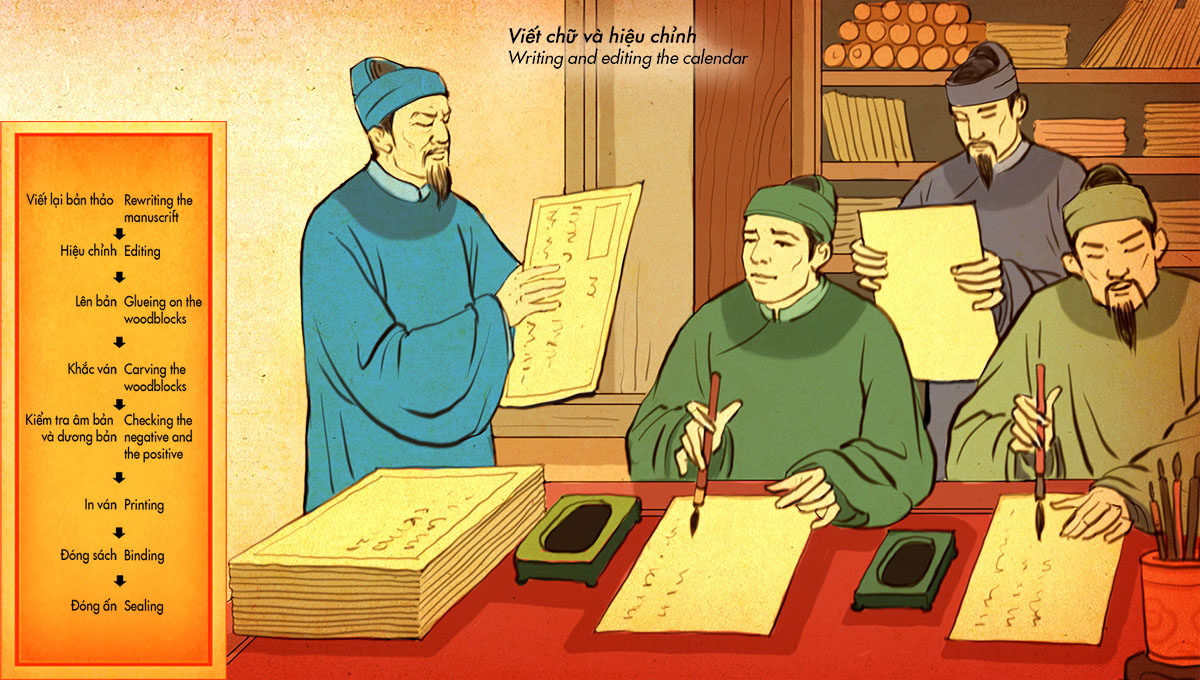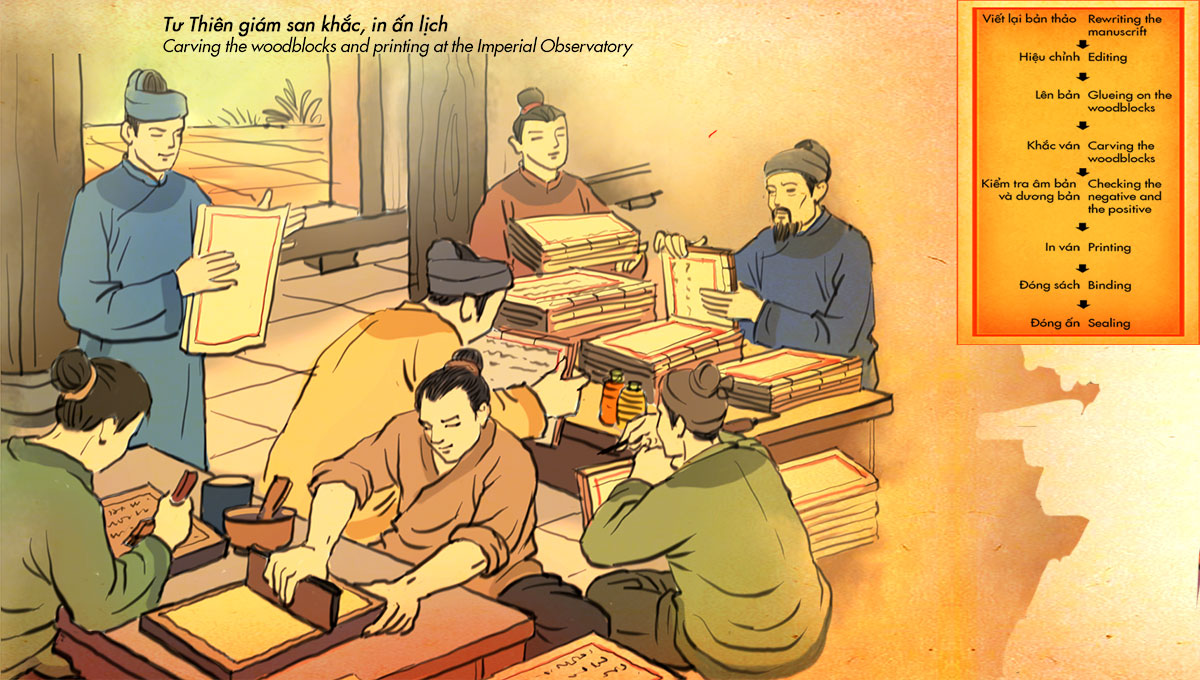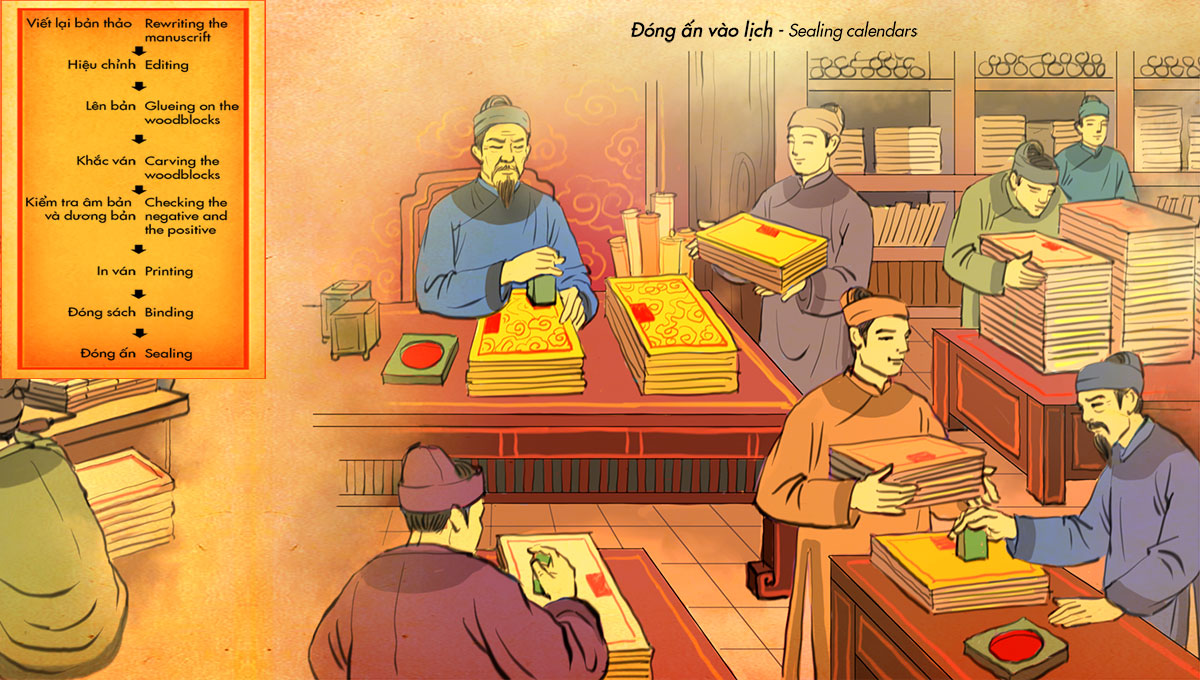Submitting the draft calendar for approval
After completing the draft and specimen calendar, Tư Thiên giám submitted it to the King. With the royal approval, Tư Thiên giám started to producing different kinds of calendar for the royal court. The “Imperial Calendar” (Ngự lịch) was made for the King, with a single version only; “Dragon-Phoenix Calendar” (Long phụng lịch) for the worship at Thái miếu, Chí Kính điện and Chính Cung miếu; “mandarinate calendar” (quan lịch) for courtiers and mandarins from central to local echelons; and “folk calendar” (dân lịch) for villages and communes.





